Understanding the Importance of Rabbit Nest Box in Rabbit Care
Learn why rabbit nest box is crucial for care, offering comfort and security to bunnies. A vital aspect of responsible rabbit ownership. Enjoy reading!
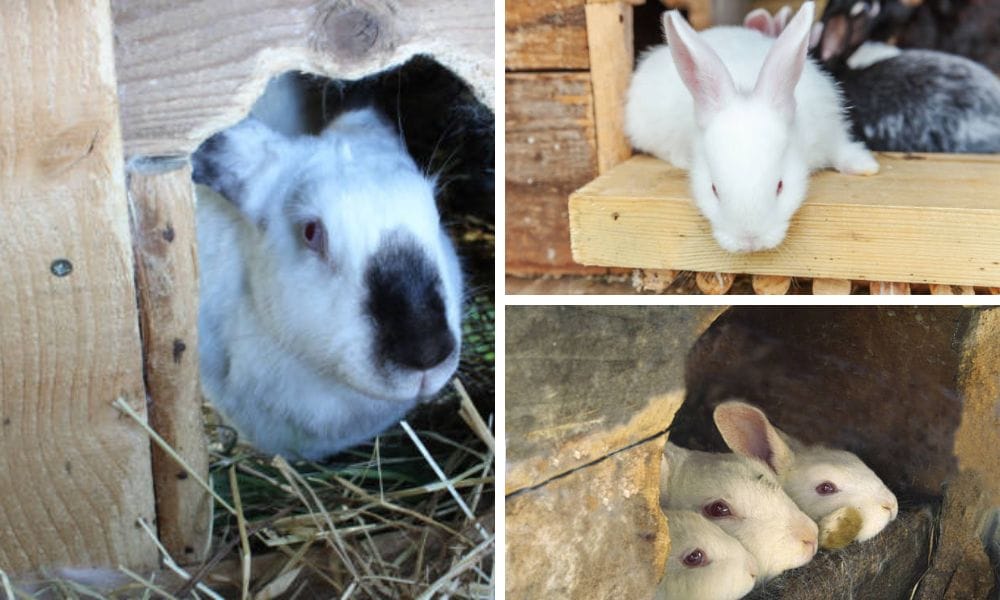
Key Takeaways:
- Rabbit nest boxes are essential for the health and safety of both doe and kits.
- Proper design, placement, and maintenance of nest boxes can significantly impact the well-being of rabbits.
- Understanding the different types of nest boxes and their specific uses is crucial for successful rabbit care.
Rabbit nest boxes are a crucial component in the care and breeding of rabbits. Whether you are a pet owner, a hobbyist, or involved in meat rabbit production, understanding the importance of a proper nesting environment is key to ensuring the health and comfort of your rabbits. In this article, we will delve into the various aspects of rabbit nest boxes, their significance, and how to manage them effectively.
The Role of Nest Boxes in Rabbit Care
Rabbit nest boxes provide a secure and comfortable space for does (female rabbits) to give birth and care for their young, known as kits. The box simulates a burrow-like environment, offering the necessary seclusion and protection from the elements and potential predators. For meat rabbits, the nest box also plays a role in ensuring the kits grow in a clean and controlled environment, which is essential for their development.
When selecting a nest box, it’s important to consider the size and breed of your rabbits. Large breeds such as Checkered Giant or New Zealand, as well as Californian and Satin, require spacious nest boxes to accommodate their size and ensure comfort during kindling. For smaller breeds such as the Lion Head, or other small breeds, a smaller box is more appropriate to keep the kits safe and warm. The dimensions of the box should be tailored to your rabbits’ needs, with enough room for the expected litter size. Selecting the right nest box for your rabbit's breed and size is crucial for their safety and comfort. Having a nest box on hand is important for breeders to be ready for kindling at any time.
A nice, well-built nest box can make a great addition to your rabbit setup, providing both durability and comfort for your animals. The importance of the box cannot be overstated, and some owners have selected specific nest boxes based on their rabbits' needs and preferences.
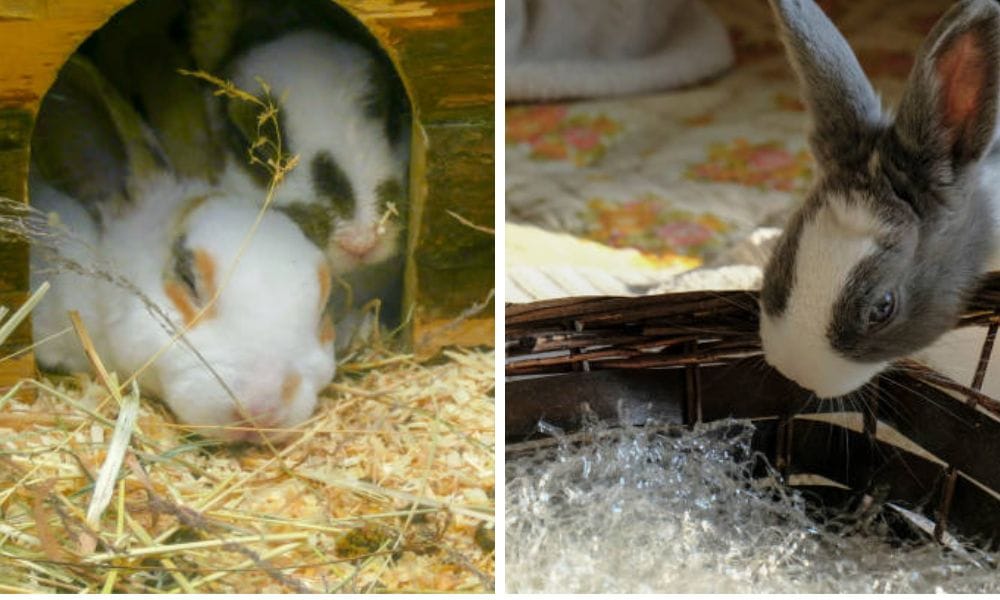
Nesting Behavior of Rabbits
Rabbits are creatures of habit, and their nesting behavior is a fascinating and essential part of their life cycle—especially when it comes to raising kits. As kindling time approaches, the doe instinctively begins to prepare a nest, gathering soft nesting material such as fur, hay, and grass to create a warm, secure space for her babies. Providing a nest box, also known as a nesting box, is crucial in supporting this natural behavior and ensuring the health and safety of both the doe and her litter.
A well-designed nest box mimics the cozy, protected environment that wild rabbits seek out for their young. Whether you choose a sturdy metal nest box, a classic wood or plywood box, or a custom-built option, the goal is to offer a safe, comfortable space that meets the needs of your specific rabbit breed. For example, larger breeds like the Checkered Giant or New Zealand require more spacious boxes, while smaller breeds such as the Lion Head do well with more compact options. Outdoor hutches and cages should always be equipped with an appropriately sized nest box to shield the kits from the elements and potential predators.
The first litter is a particularly sensitive time for both the doe and her babies. A quality nest box helps reduce stress, encourages healthy nesting behavior, and provides a clean, dry environment for the kits to thrive. Features like a removable floor or easy-to-clean surfaces make it simple to keep the box free from moisture and bacteria, which is vital for the well-being of the litter. Over the years, a good nest box can be used for multiple litters, making it a smart investment for any rabbit owner.
In addition to comfort and cleanliness, nest boxes play a key role in protecting kits from harsh weather and predators, especially in outdoor settings. Choosing a box designed for your climate—such as one with extra insulation for cold weather or added ventilation for hot conditions—ensures your rabbits stay safe and healthy no matter the circumstances.
Ultimately, providing a safe, well-designed nest box is one of the most important steps you can take to support your rabbits’ natural nesting instincts. Whether you’re preparing for your first litter or have years of experience, selecting the right nest box and maintaining it properly will help your rabbits feel secure and give their kits the best possible start in life. With a wide range of options available, from metal nest boxes to plywood designs, it’s easy to find the perfect fit for your rabbits’ needs and your specific situation.
Design and Construction of Nest Boxes
The design of a rabbit nesting box can vary, but there are some common features that are important for the well-being of the rabbits. The box should be constructed from quality materials like wood or heavy-duty plastic that can provide insulation during winter and keep the nest cool in the summer. When selecting materials, choose the right piece of wood for each part of the box to ensure durability and fit. During construction, make sure to cut each piece precisely so that all parts fit together properly. The use of hardware cloth in the construction can help keep the nest clean, as it allows waste to fall through, away from the kits.
For easy cleaning, some nest boxes come with a removable floor or a hinged lid. These items can be replaced as needed, making maintenance simple. This feature is particularly useful as it allows for quick and efficient cleaning without disturbing the doe or the kits too much. The box should also have sides high enough to prevent the kits from being dragged out of the nest by the doe or escaping on their own before they are ready. A well-built nest box will stand up to the work of repeated use in breeding environments.
When building a DIY nest box, be sure to follow step-by-step instructions for best results. You can watch a video tutorial or read detailed instructions to guide you through the process.
Placement and Maintenance of Nest Boxes
The placement of the nest box within the rabbit's cage is another factor to consider. It should be positioned in a quiet, draft-free area to provide a sense of security for the doe. The box should be easy to attach to the cage to prevent it from being moved or tipped over. Some rabbit owners prefer to place the box on a shelf or elevate it slightly off the cage floor to further protect the kits from drafts and to facilitate easy cleaning.
Maintenance of the nest box is crucial for the health of the rabbits. The nesting material, such as straw or hay, should be replaced regularly to keep the nest dry and clean. This helps prevent the growth of mold and bacteria, which can be harmful to both the doe and her babies. The box itself should be cleaned and disinfected between litters to ensure a sanitary environment for the next set of kits.
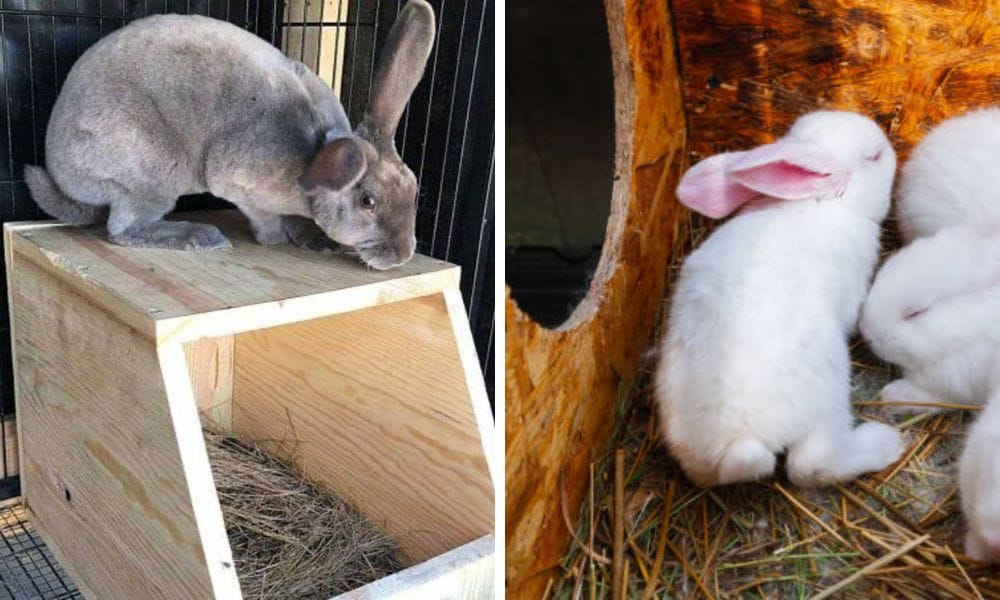
Placement and Maintenance of Nest Boxes
The placement of the nest box within the rabbit's cage is another factor to consider. It should be positioned in a quiet, draft-free area to provide a sense of security for the doe. The box should be easy to attach to the cage to prevent it from being moved or tipped over. Some rabbit owners prefer to place the box on a shelf or elevate it slightly off the cage floor to further protect the kits from drafts and to facilitate easy cleaning.
Maintenance of the nest box is crucial for the health of the rabbits. The nesting material, such as straw or hay, should be replaced regularly to keep the nest dry and clean. This helps prevent the growth of mold and bacteria, which can be harmful to both the doe and her babies. The box itself should be cleaned and disinfected between litters to ensure a sanitary environment for the next set of kits.
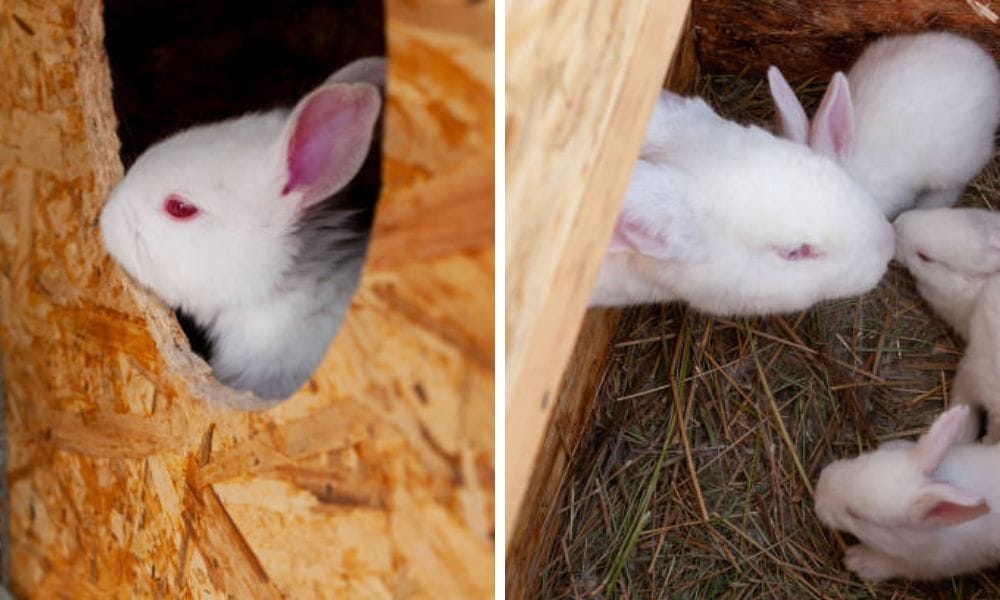
Types of Nest Boxes and Their Uses
There are several types of nest boxes available, each designed for specific uses and situations. For example, some boxes are built with a lip around the edge to prevent the doe from accidentally stepping on her kits and to keep the kits from spilling out when the mother rabbit jumps out of the box. Others may have a slanted roof to prevent the doe from sitting on top of the box, which can be dangerous for the kits inside.
DIY enthusiasts may opt to build their own rabbit nest boxes. This allows for customization to fit the specific needs of their rabbits. DIY boxes can be made from plywood or other wood pieces, and the construction can be as simple or complex as desired. However, it’s important to ensure that any DIY box is safe, with no sharp edges or loose pieces that could harm the rabbits. Some nest boxes are also designed for use with other small animals, making them suitable for a variety of small pets. Some of these were used for Polish, Holland Lops, and Champagnes with great success.
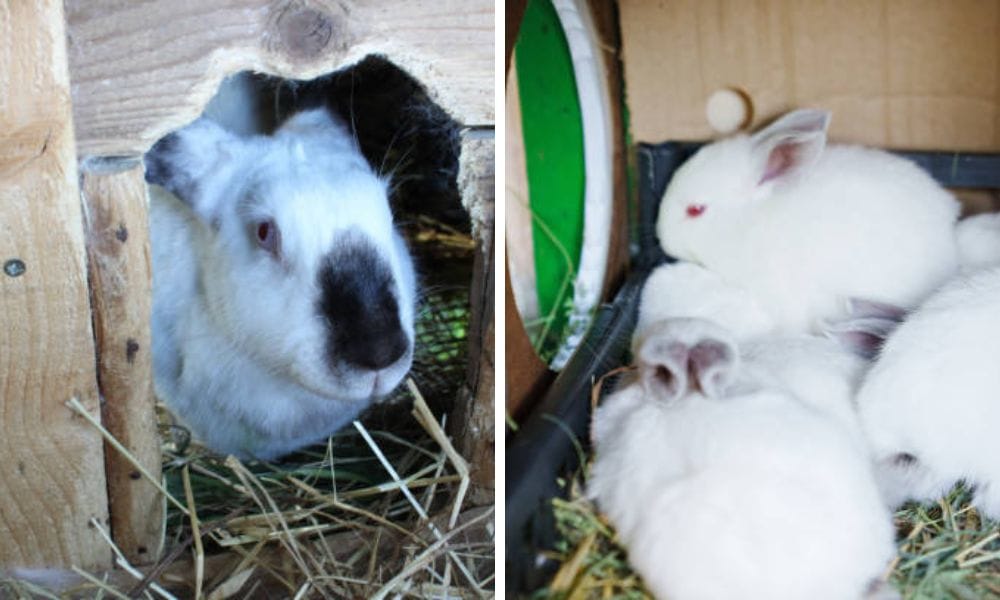
Seasonal Considerations for Nest Boxes
The needs of rabbit nest boxes can change with the seasons. In the winter, it's important to provide extra insulation to keep the kits warm. This might involve adding more nesting material or even using a box with thicker walls. Conversely, in the summer, ensuring adequate ventilation and a cooler environment is key to preventing overheating.
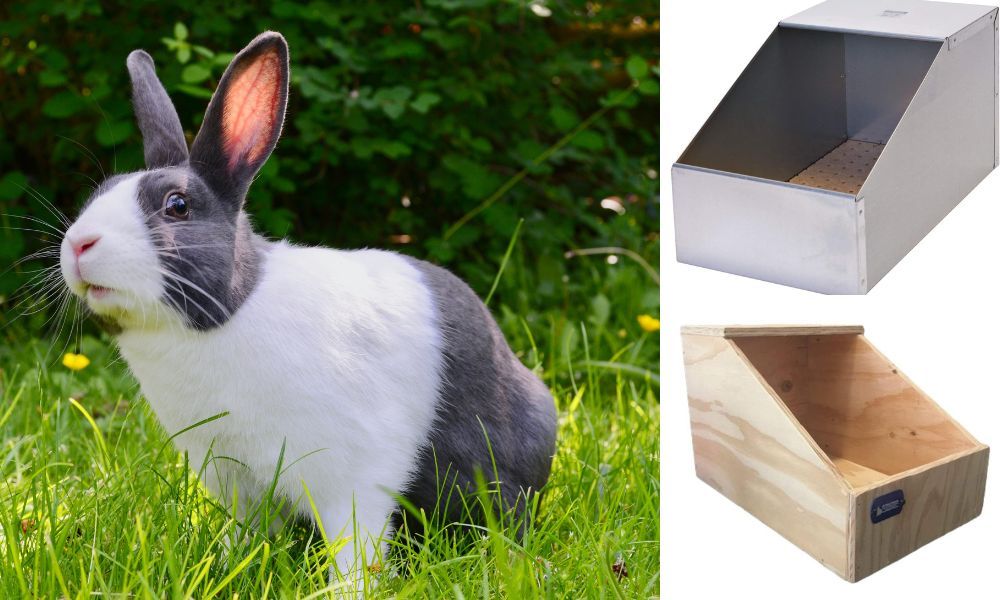
Some rabbit owners may use different nest boxes for different seasons, switching out a well-insulated box for a more open, breathable one as the weather warms. Regardless of the season, the comfort and safety of the doe and her kits should always be the top priority.
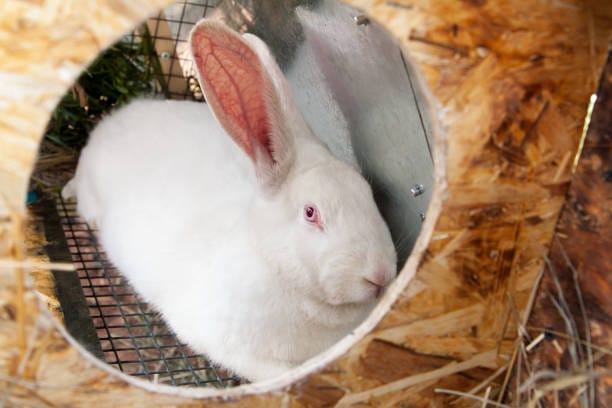
Summary
Rabbit nest boxes are more than just a place for does to give birth; they are a fundamental aspect of rabbit care that ensures the safety, health, and comfort of both the doe and her kits. From the design and construction to the placement and maintenance, every detail of the nest box plays a role in the well-being of your rabbits. By understanding the different types of nest boxes and their specific uses, rabbit owners can provide the best care possible throughout the year.
FAQ Section
Q: How often should I replace the nesting material in the rabbit nest box? A: The nesting material should be replaced as needed to keep the nest clean and dry. This is typically done every few days, but it may vary depending on the number of kits and the cleanliness of the doe.
Q: Can I use any material for the construction of a DIY rabbit nest box? A: While you can be creative with materials, it's important to use safe, non-toxic, and durable materials for the construction of a DIY rabbit nest box. Avoid materials that can splinter, have sharp edges, or are treated with chemicals.
Q: When should I introduce the nest box to the doe's cage? A: The nest box should be introduced to the doe's cage about a week before the expected kindling (birth) date. This gives the doe time to get accustomed to the box and start preparing it for the arrival of her kits.

